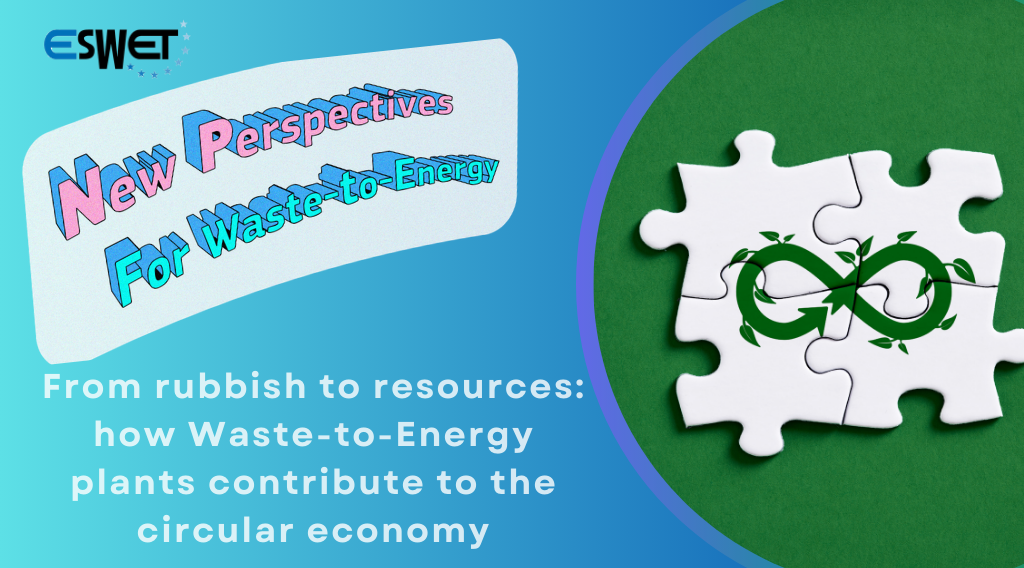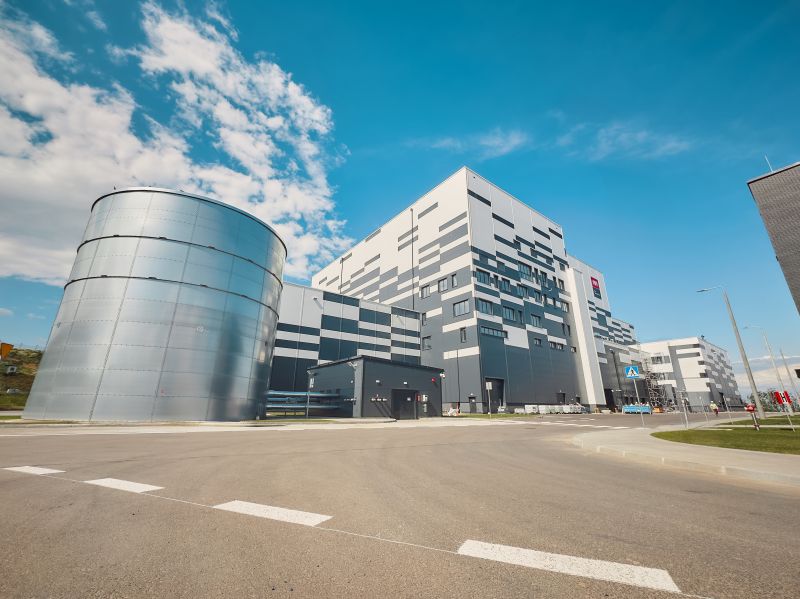From rubbish to resources: how Waste-to-Energy plants contribute to the circular economy
Take a look at what goes into a typical Waste-to-Energy plant, and see how your unwanted waste can be turned into valuable resources for your community

Globally, it is estimated that 2.24 billion tonnes of waste were generated in 2020, a number expected to increase to 2.88 billion tonnes by 2050. This leads to pollution of our environment and serious health risks for some of the world’s most vulnerable people. Disposing of this abundance of waste responsibly while striving for environmental sustainability poses a growing challenge. Enter Waste-to-Energy plants—a transformative solution that not only manages non-recyclable municipal solid waste but also contributes significantly to the circular economy. These innovative facilities are key to converting waste into valuable resources and producing electricity and heat while minimising environmental impact. As the demand for safe waste management and sustainable energy solutions intensifies, Waste-to-Energy plants provide a means of efficient and environmentally conscious progress.
What goes in a Waste-to-Energy plant?
In 2021, each European citizen produced 530kg of waste, a number rising as high as 834kg per person in Austria. Ideally, societies aim to reduce the waste produced and reuse or recycle items instead of throwing them away. However, a large portion of waste cannot be reused or recycled, or even eternally recycled.
This is the case of non-recyclable, municipal solid waste. This is the rubbish that is generated from households, offices, and other small businesses, that is not sorted for recycling, composting, or other specialised waste streams, and is separately collected as residual waste. The composition can vary based on local rules and procedures, as well as individual habits, but generally, a mixed municipal waste bin may contain the following items:
Non-recyclable or difficult-to-recycle plastics such as mixed materials, laminates, and certain types of plastic films; packaging materials with multiple layers that cannot be easily separated for recycling; soft plastics like plastic bags, wrappers, and packaging materials that are not accepted in regular plastic recycling, or are lightweight and non-biodegradable, e.g., bubble wrap and air pillows, and styrofoam, often used in packaging and disposable containers; rubber gloves, disposable cutlery made of non-recyclable plastics; wrapping paper with metallic or plastic coatings that make it non-recyclable; paper and cardboard materials that are not suitable for recycling due to their adhesive components or because they are contaminated (e.g., pizza boxes); non-recyclable hair ties, clips, and accessories; office stationaries, like staples, clippers, parts of pens, and pencils; certain beverage and food containers with complex layers of materials; old shoes and textiles (e.g., worn-out towels or linens) that are no longer suitable for donation or recycling; leather scraps; non-recyclable toys and pet toys; broken ceramics; artificial flowers; non-recyclable razors or razor cartridges; sanitary products (e.g., feminine and baby); used dog bags and waste from pets that is not composted due to potential pathogens; yard waste; traditional light bulbs that are not energy-efficient and are not accepted in regular recycling due to their different composition; eyewear that is damaged or outdated; candy wrappers; unusable umbrellas made of mixed materials; hand tools or small gadgets that are damaged beyond repair; cigarette butts; small pieces of treated or painted wood that cannot be composted or recycled; small pieces of glass, glassware, or mirrors that cannot be recycled due to their size or contamination; certain metal objects that may not be easily recyclable; and other miscellaneous items.
On top of that, there are rejected materials from recycling and composting processes that need to be treated as well.
Keeping our communities safe and pleasant to live in means finding a way to dispose of all this trash in an eco-friendly manner. Waste-to-Energy offers a means of doing so while providing vital services to our society and contributing to the circular economy. Waste-to-Energy puts the residual rubbish to use in heating our homes and powering our communities.
In Belgrade, for example, everyday waste from peoples’ homes used to end up in a landfill which became notorious for landslides, fires, pollution, and foul odour. A new waste management facility including a Waste-to-Energy plant with the capacity to convert up to 340,000 tons of waste into renewable heat and electricity has revitalised the area, allowing locals to breathe clean air and for the environment to return to its natural state.
The need for safer waste management
The EU has set a minimum target of a 55% recycling rate by 2030, which leaves 45% of waste still to be managed. The EU also aims to send under 10% of waste to landfilling, which, in compliance with the waste management hierarchy means more must be sent for energy recovery and recycling. Currently, just under 23% (54 million tonnes) of waste in the EU is landfilled, meaning that hitting these targets will mean 68.5 million tonnes of waste will have to be sent for energy recovery or recycling. In 2021, the EU exported 33 million tonnes of waste to non-EU countries. In Turkey, the largest importer of European waste, 69% of waste goes to landfill and 0.4% is still disposed of through open burning and dumping into rivers and land. Furthermore, illegal waste shipments account for up to 30% of the total EU waste trade, with much of this ending up dumped or burned in poorer countries.
Even with reduction of waste production and increased reuse and recycling, all of these facts point towards an increased need for safe waste management. Utilisation of Waste-to-Energy can result in up to 90% less waste when compared to landfilling, which leads to less pollution, less GHG emissions, less environmental damage, and more freed-up land that can be used for nature restoration.
What comes out:
Waste-to-Energy plants transform non-recyclable waste into energy that is then converted into electricity and heat and distributed to end-users.
This method generates energy more efficiently than energy recovered from landfill and emits significantly less CO2. In Europe there are approximately 500 Waste-to-Energy plants, which produce enough electricity to supply almost 20 million people per year and provide around 17 million people with heat annually. After Belgrade’s waste reforms, their Waste-to-Energy facility can now produce enough electricity to power 30,000 local households and heat 60,000 houses. Overall, approximately 10% of Europe’s district heating comes from Waste-to-Energy and in some areas over half of residential demand is covered by Waste-to-Energy.
Waste-to-Energy also recovers valuable materials
On top of heat and electricity, the remains of what gets incinerated can be put to use and bolster the circular economy. The incineration process results in incineration bottom ashes (IBA) which have a wide array of uses. 85% of this IBA contains non-combustible materials such as sand, stones and ash which can be utilised as filling material for construction. 10-12% of IBA is composed of ferrous metals and the remaining 2-5% is non-ferrous metals which can all be extracted and used again as raw materials. As the EU has set ambitious targets for the domestic production of critical raw materials, Waste-to-Energy plants have a crucial role to play in ensuring a secure supply of raw materials and doing so in a more sustainable way than traditional extraction methods such as mining.
Conclusion
Waste-to-Energy plants represent a vital and sustainable solution to the dual challenges of waste management and energy production. Through cutting-edge technology and stringent environmental controls, these facilities convert what was once considered waste into valuable resources. As the global community seeks innovative ways to combat climate change and promote sustainable development, embracing Waste-to-Energy solutions emerges as an ecological and forward-thinking approach.


